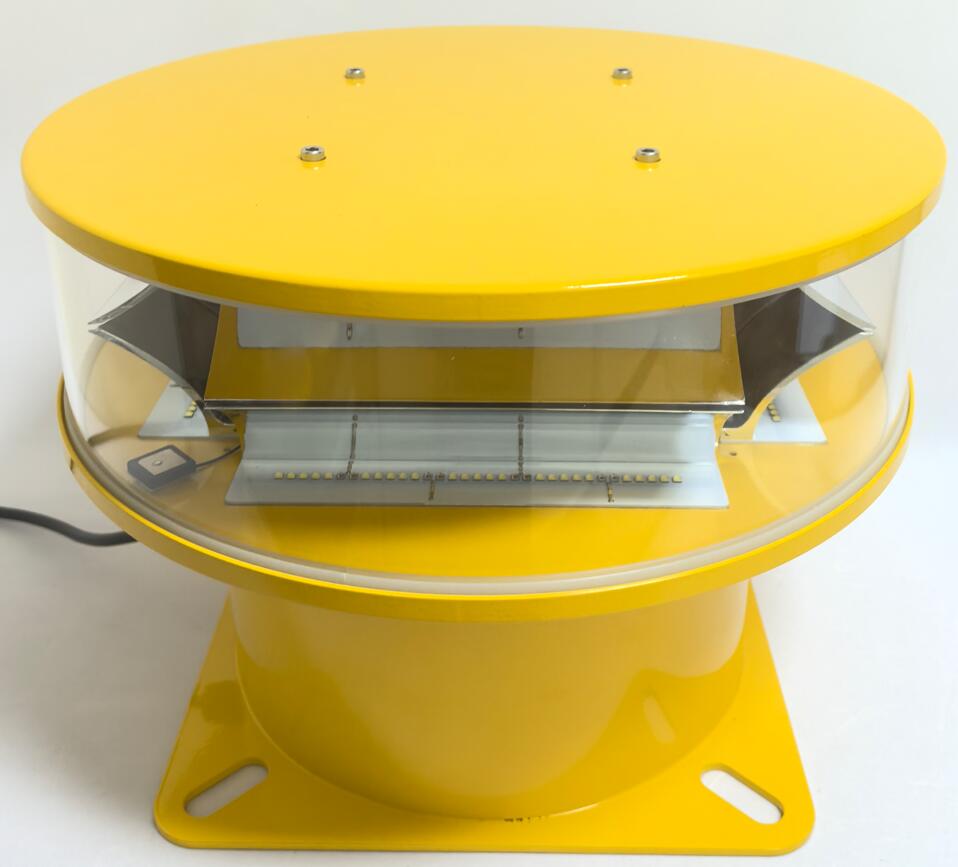The Critical Role of Obstruction Lamps in Aviation and Infrastructure Safety
In the modern world, where skyscrapers, wind turbines, and communication towers dominate the skyline, ensuring the safety of air traffic is a top priority. One of the most effective tools for achieving this is the obstruction lamp. These specialized lights are designed to mark tall structures, making them visible to pilots and preventing collisions. This article explores the importance, functionality, and applications of obstruction lamps, highlighting their role in safeguarding both aviation and infrastructure.
1. What is an Obstruction Lamp?
An obstruction lamp is a high-intensity light installed on tall structures such as buildings, towers, and wind turbines to alert pilots of their presence. These lamps are typically red or white and are designed to be visible from long distances, even in adverse weather conditions. They are a critical component of aviation safety systems, ensuring that obstacles are clearly marked and avoidable.
2. Key Features of Obstruction Lamps
High Visibility: Obstruction lamps are designed to be highly visible, with bright, intense light that can be seen from miles away.
Durability: Built to withstand harsh environmental conditions, these lamps are resistant to extreme temperatures, heavy rain, and strong winds.
Energy Efficiency: Many modern obstruction lamps use LED technology, which is energy-efficient and has a longer lifespan compared to traditional lighting systems.
Compliance: Obstruction lamps must meet stringent regulatory standards set by aviation authorities such as the FAA (Federal Aviation Administration) and ICAO (International Civil Aviation Organization).

3. Types of Obstruction Lamps
There are several types of obstruction lamps, each suited for different applications:
Low-Intensity Obstruction Lamps: These are used for structures less than 150 meters tall. They emit a steady red light and are typically used on smaller buildings and towers.
Medium-Intensity Obstruction Lamps: Suitable for structures between 150 and 300 meters, these lamps can emit either red or white light and are often used on taller buildings and communication towers.
| Obstruction lamps |
| Obstruction lamp |
High-Intensity Obstruction Lamps: Used for structures exceeding 300 meters, these lamps emit a bright white light and are commonly found on skyscrapers and large wind turbines.
4. Importance of Obstruction Lamps
Obstruction lamps play a crucial role in aviation safety for several reasons:
Collision Prevention: By marking tall structures, obstruction lamps help prevent collisions between aircraft and obstacles, ensuring safe navigation through airspace.
Regulatory Compliance: Many aviation authorities require the installation of obstruction lamps on tall structures as part of their safety regulations. Compliance with these regulations is essential for operational legality and safety.
Enhanced Visibility: Obstruction lamps provide clear visual cues to pilots, making it easier to identify and avoid obstacles, especially during nighttime or in poor visibility conditions.
5. Applications of Obstruction Lamps
Obstruction lamps are used in various settings, including:
Urban Skyscrapers: In densely populated urban areas, obstruction lamps are essential for marking tall buildings and ensuring they are visible to pilots navigating through complex airspace.
Wind Turbines: Wind farms, often located in open areas, use obstruction lamps to mark turbines and prevent collisions with low-flying aircraft.
Communication Towers: These towers, often located in remote areas, require obstruction lamps to ensure they are visible to pilots, especially at night.
6. Installation and Maintenance
Proper installation and maintenance of obstruction lamps are critical for their effectiveness. Key considerations include:
Placement: The lamps should be installed at the highest points of the structure to ensure maximum visibility.
Power Supply: A reliable power source is essential, and backup systems like solar panels or batteries should be considered to ensure uninterrupted operation.
Regular Inspections: Routine maintenance and inspections are necessary to ensure the lamps are functioning correctly and remain compliant with aviation regulations.
7. Advantages of Using Obstruction Lamps
Improved Safety: The primary advantage of obstruction lamps is the enhanced safety they provide by marking obstacles and preventing collisions.
Regulatory Compliance: Installing obstruction lamps ensures compliance with aviation safety regulations, avoiding potential fines and legal issues.
Operational Efficiency: By providing clear visual guidance, these lamps help reduce the risk of accidents and ensure safe navigation through airspace.
8. Choosing the Right Obstruction Lamp
When selecting an obstruction lamp, consider the following factors:
Compliance: Ensure the lamp meets the relevant aviation safety standards and has the necessary certifications.
Durability: Choose a lamp that is built to withstand the environmental conditions of your location.
Supplier Reputation: Purchase from a reputable supplier with a track record of providing reliable and high-quality products.
Obstruction lamps are a vital component of modern aviation safety systems. Their high visibility, durability, and energy efficiency make them indispensable for marking tall structures and preventing collisions. By understanding their importance, functionality, and benefits, structure owners and operators can make informed decisions that enhance safety and ensure regulatory compliance.
In summary, the obstruction lamp is more than just a light; it is a critical safety tool that ensures the safe and efficient operation of airspace. Whether for urban skyscrapers, wind turbines, or communication towers, investing in high-quality obstruction lamps is essential for maintaining safety and operational integrity in the aviation industry. Always prioritize quality and compliance to ensure your structures are safely visible to pilots, contributing to a safer airspace for everyone.
